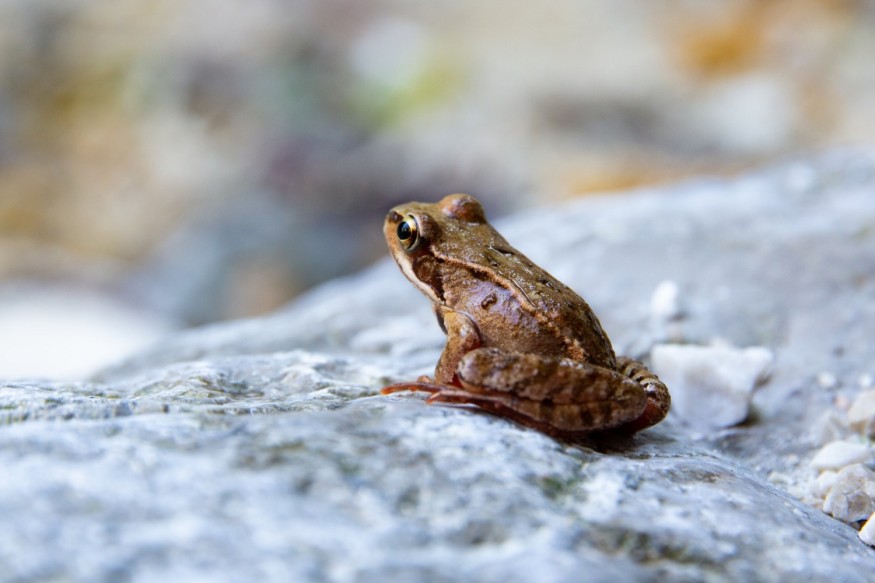Caribbean frogs such as the blue-eyed La Hotte glanded frog, which lives in the forests of Haiti, have been found to be geographically the oldest Caribbean vertebrates and are Florida's first vertebrates, according to a new study led by researchers in the United States. Although scientists already knew the existence of these frogs, it was only recently that they were able to confirm that the amphibians arrived in North America earlier than previously thought.
The fossil study acknowledges that the scientific community was already well-informed when it comes to the Caribbean region as the origin of some North American frogs. However, current information on these vertebrates lacks fossil evidence that would specify when and how this movement from the Caribbean to North America had occurred. Over a decade ago, scientists postulated that the rich frog biodiversity in North America came from a single frog species through migration from South America.
La Hotte Glanded frog

In the new fossil study published in the Zoological Journal of the Linnean Society on October 19, researchers from the Florida Museum of Natural History in Florida examined the La Hotte glanded frog (Eleutherodactylus glandulifer), which belongs to a diverse genus of frogs from the Caribbean region, where the US state of Florida is very close to.
The La Hotte glanded frog once disappeared from the radar of scientists for 20 years. Now, new fossil evidence shows that frogs from the genus Eleutherodactylus are the oldest vertebrates found in Florida from the Caribbean. One of the research paper's authors, Maria Vallejo-Pareja, there was a knowledge gap surrounding the subject matter, adding that the answers were just right in front of scientists.
Also Read : 5 Times in History That Frogs Fell From the Sky
Oldest Caribbean Vertebrates
The Florida museum research team were able to arrive at their findings by conducting a comprehensive study of anurans from the Late Oligocene period (33.9 million to 23 million years ago) of Florida, revealing the abundance of fossils belonging to the said genus of frogs.
Through time-calibrated molecular phylogenies, results suggest Eleutherodactylus originated from the Caribbean during the Early Oligocene, wherein the ancient frogs eventually colonized Central America during the Middle Miocene period.
Caribbean Frog Migration
Regarding the recent Zoological Journal of the Linnean Society study, scientific analysis of the La Hotte glanded frog, its ancestors, and related frog species to the said genus may have undergone another major migration, in addition to the one mentioned during the Middle Miocene.
To connect the dots, a report by the National Science Foundation back in 2007 revealed that the great Caribbean frog migration, involving Caribbean frog populations, include almost all of the 162 terrestrial-breeding frog species on the Caribbean islands.
In particular, the organization highlighted that these amphibians, including the coqui frogs of Puerto Rico, came from a single frog species that arrived in the region 30 to 50 million years ago through a sea voyage from South America, based on DNA analyses by scientists at Pennsylvania State University.
© 2026 NatureWorldNews.com All rights reserved. Do not reproduce without permission.





